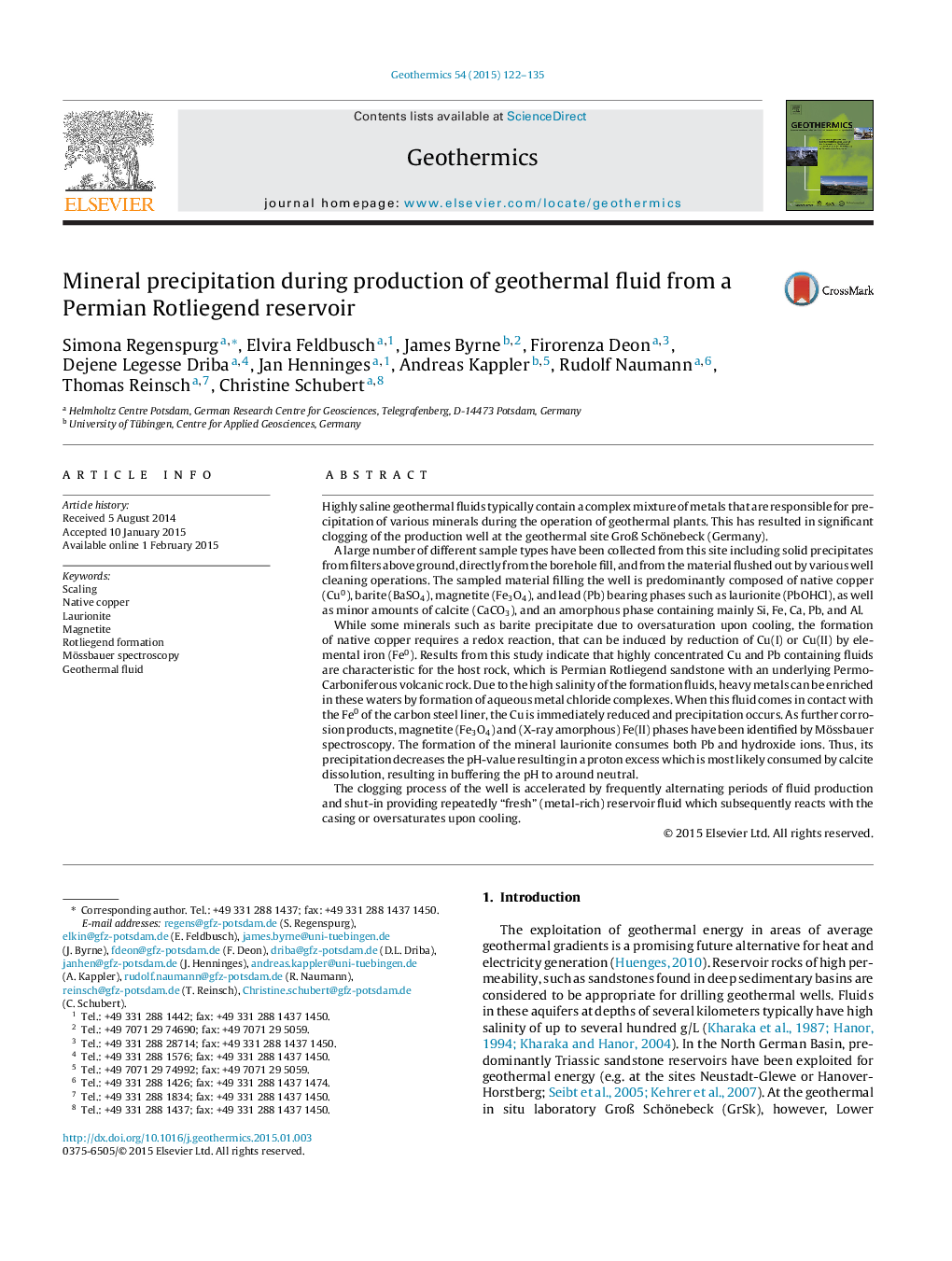| کد مقاله | کد نشریه | سال انتشار | مقاله انگلیسی | نسخه تمام متن |
|---|---|---|---|---|
| 1742309 | 1521914 | 2015 | 14 صفحه PDF | دانلود رایگان |

• Massive clogging of a geothermal production well with mineral precipitates.
• Fill composition: native copper, barite, magnetite, and lead bearing phases.
• Native copper forms by reduction of dissolved Cu(II) with elemental iron (Fe0).
• Cu- and Pb- rich fluids are characteristic for Permian Rotliegend sandstone.
Highly saline geothermal fluids typically contain a complex mixture of metals that are responsible for precipitation of various minerals during the operation of geothermal plants. This has resulted in significant clogging of the production well at the geothermal site Groß Schönebeck (Germany).A large number of different sample types have been collected from this site including solid precipitates from filters above ground, directly from the borehole fill, and from the material flushed out by various well cleaning operations. The sampled material filling the well is predominantly composed of native copper (Cu0), barite (BaSO4), magnetite (Fe3O4), and lead (Pb) bearing phases such as laurionite (PbOHCl), as well as minor amounts of calcite (CaCO3), and an amorphous phase containing mainly Si, Fe, Ca, Pb, and Al.While some minerals such as barite precipitate due to oversaturation upon cooling, the formation of native copper requires a redox reaction, that can be induced by reduction of Cu(I) or Cu(II) by elemental iron (Fe0). Results from this study indicate that highly concentrated Cu and Pb containing fluids are characteristic for the host rock, which is Permian Rotliegend sandstone with an underlying Permo-Carboniferous volcanic rock. Due to the high salinity of the formation fluids, heavy metals can be enriched in these waters by formation of aqueous metal chloride complexes. When this fluid comes in contact with the Fe0 of the carbon steel liner, the Cu is immediately reduced and precipitation occurs. As further corrosion products, magnetite (Fe3O4) and (X-ray amorphous) Fe(II) phases have been identified by Mössbauer spectroscopy. The formation of the mineral laurionite consumes both Pb and hydroxide ions. Thus, its precipitation decreases the pH-value resulting in a proton excess which is most likely consumed by calcite dissolution, resulting in buffering the pH to around neutral.The clogging process of the well is accelerated by frequently alternating periods of fluid production and shut-in providing repeatedly “fresh” (metal-rich) reservoir fluid which subsequently reacts with the casing or oversaturates upon cooling.
Figure optionsDownload as PowerPoint slide
Journal: Geothermics - Volume 54, March 2015, Pages 122–135